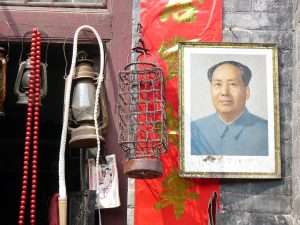K. L. Billingsley writes for the London Spectator, The Wall Street Journal, and other publications.
From John Kenneth Galbraith and Michael Harrington to Charles Murray and Jack Kemp, gallons of ink have been spilled over the welfare issue. Some consider welfare the benchmark of a society’s compassion. Others see it as a social toxin. Every so often, however, a case comes along that explains things better than any book, however freighted with statistics.
According to court documents, internal investigations, and press reports in San Diego County, California, it went this way:
Victoria Aguirre started work in the county’s Department of Social Services in 1977. By the mid-1980s she had risen to the rank of supervisor. The work load in the welfare office could not have been too heavy because it certainly afforded Aguirre plenty of time for creative thinking. In the course of her duties in 1986, Aguirre made two fascinating discoveries.
First, the widespread computerization of records made it possible for her to create fake welfare files without supporting paper documentation.
Second, those who receive welfare through Aid to Families with Dependent Children (AFDC) can designate another person to receive their payments. This neat little loophole meant that Aguirre was free to designate anyone she pleased to receive the checks for her phony case files.
Evidently a public-minded, “sharing” sort of person, Aguirre decided to cut in others on her scheme. She worked primarily with Angela Nieto, a “benefits analyst.” The pair allegedly designated a host of relatives, friends, and fellow workers as recipients of fraudulent payments. Those on the receiving end would cash the fat government check, then pay two-thirds of the total to Aguirre. Aguirre would then deal Nieto her cut, which court documents peg at one-third.
Aguirre and Nieto showed considerable brilliance in diversifying their assets. In some cases, they evidently invented a fraudulent appeal process and used it to procure retroactive payments. Payments ranged from $5,080 to $99,699, not a bad score by any standard. The masterminds carefully tucked away their phantom recipients among 60,000 AFDC cases.
From 1986 to 1990, the two women were on a roll. They are alleged to have pulled in at least $553,000, with some estimates reaching as high as $1 million. It was the largest case of welfare fraud in the county’s history. The duration of the rip-off reveals the ineptitude of the system design and the sloppiness of local oversight. It wasn’t until 1990 that state auditor John Hernandez happened to chance upon one of the phony cases during a random review. Other cases, and criminals, doubtless remain undetected.
Aguirre and Nieto resigned after the revelations, but were not charged until October 30, 1991. If convicted, they face 10 years in prison. Their tidy con game provides a parable for the entire welfare system by raising the question: “Who benefits?”
Charles Murray, Alan Keyes, Glenn Loury, and others have provided ample evidence that welfare is ultimately a destructive force for its recipients. Liberals such as Daniel Patrick Moynihan and Bill Moyers have charted the damage to the family, an irreplaceable unit. Economist Walter Williams argues that welfare is not only destructive of family, motivation, and self-esteem, but also immoral. By what moral standard, asks Williams, can one person be “entitled” to receive the money of another?
There can be no doubt that welfare, in all its forms, is one of the most wasteful programs in human history. A dollar cannot be sent to Washington, go out on the town, and then pass on unscathed to its intended recipients. According to National Public Radio, of every dollar that goes to the Bureau of Indian Affairs, 89 cents goes to administrative costs. George Roche’s America by the Throat and William Simon’s A Time for Truth cite many other startling cases.
Welfare’s primary beneficiaries are not the poor, the homeless, or the indigent. They are the endless squads of administrating bureaucrats and sponsoring politicians. These fiscal parasites have a stake in the expansion of their welfare constituency.
Aguirre and Nieto did it with computers. Politicians do it with rhetoric and political leverage. It is fraud on steroids. As Joe Sobran notes, in a democracy voters are public officials; welfare programs therefore amount to bribes.
Welfare equates compassion with the “redistribution of wealth.” Aguirre and Nieto, like all thieves, were also in the redistribution business. Welfare strains the economy, cheats honest and hardworking citizens, facilitates corruption, and helps wreck the lives of millions. In other words, welfare is ultimately a criminal enterprise.



